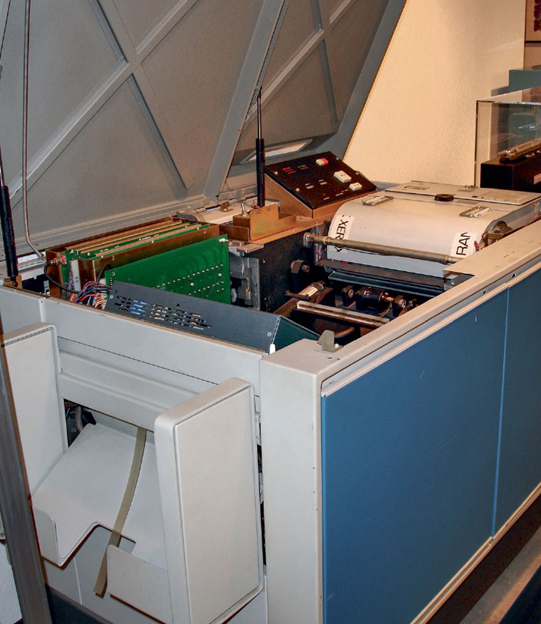1971
Laser Printer
Gary Starkweather (b. 1938)
In 1967, Gary Starkweather was an engineer at Xerox’s research and engineering facility in Webster, New York. Xerox copiers worked by illuminating an original document with a bright light and focusing the reflected light on a photosensitive rotating drum, which then passed through toner and pressed against a piece of plain paper. The toner stuck only to the parts of the paper where the drum had not been illuminated. The paper was then heated so that the toner would melt and fuse in place. Voilà! Instant copies.
Starkweather’s big idea was to remove the bright lights and the original, and instead scan the xerographic drum with a laser that was modulated by a computer, allowing the computer to precisely control what appeared on the page. The result would be a Xerox copy without an original, and a fundamentally new kind of computer output device.
Starkweather’s management was resistant to the idea and directed him to work on something else. Instead, he spent three months building his prototype in secret. When Xerox’s New York management office still wasn’t interested, Starkweather transferred to the company’s Palo Alto Research Center (PARC), which was filled with engineers who were building the machines of the future. He arrived at PARC in January 1971 and had a working printer nine months later.
PARC had an easier time making prototypes than convincing Xerox to sell them. The XGP (Xerox Graphics Printer) was the first laser printer to make it out of PARC. The XGP printed at 180 dots per inch on a continuous roll of 8½-inch paper that the printer then cut into individual pages. One XGP was lent to Stanford, just down the street, while another was installed across the country on the ninth floor of the MIT Artificial Intelligence Laboratory; however, none were ever sold.
In 1976, PARC created the Dover, which could print two pages per second at 300 dots per inch. Like the XGP, the Dover was also an experimental machine. That same year, IBM released the first commercial laser printer, the IBM 3800. Not wanting to fall behind, Xerox released the Xerox 9700 laser printer the following year, in 1977.
SEE ALSO Xerox Alto (1973), PostScript (1982), Desktop Publishing (1985)
Dover laser printer displayed at the Computer History Museum.
